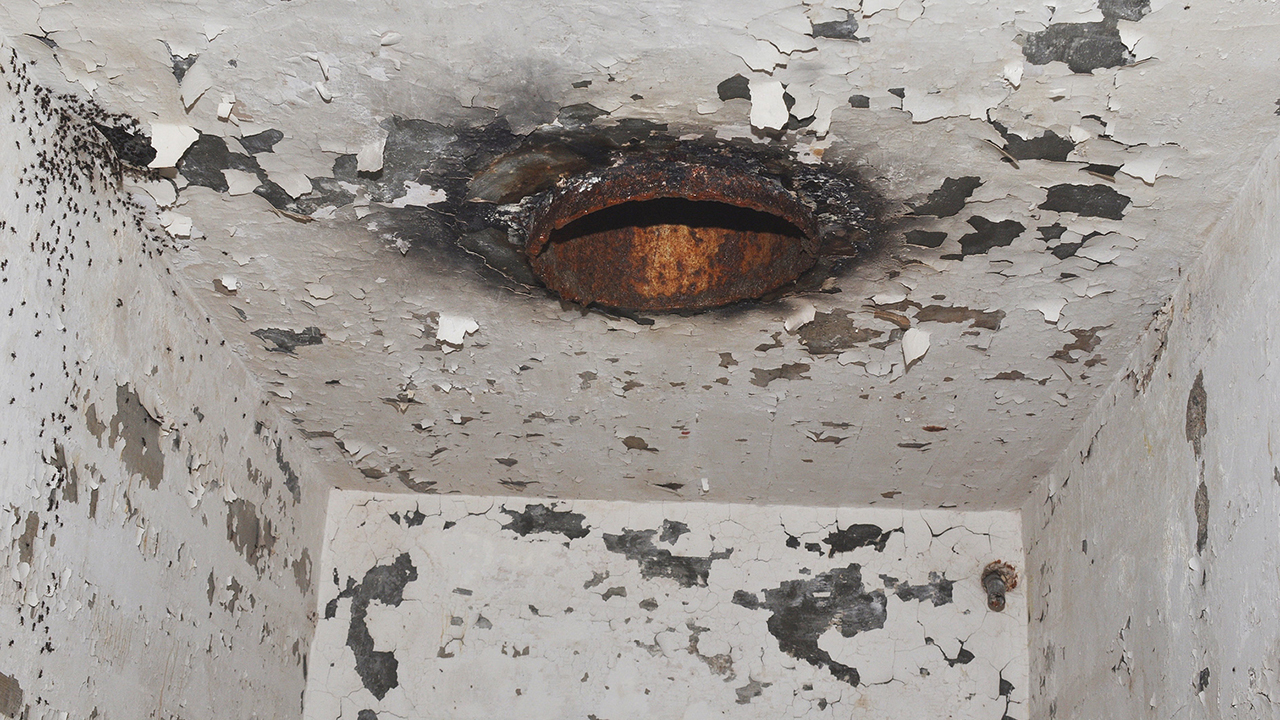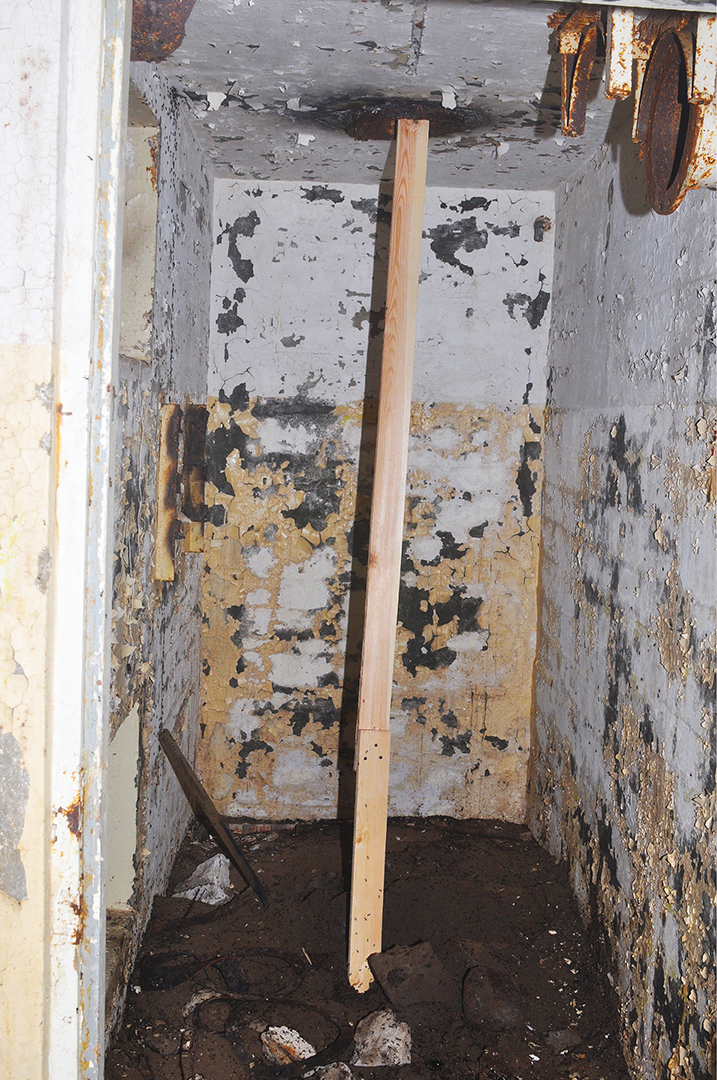Thousands of Ants Trapped in Polish Nuclear Bunker Turn to Cannibalism to Survive
It's an ant-eat-ant world.

In an abandoned nuclear bunker in western Poland, hundreds of thousands of worker ants that fell inside and were cut off from the main colony survived for years by eating the bodies of their dead.
When researchers visited the bunker in 2016, they described a community of nearly a million worker ants of the species Formica polyctena, or wood ants. The main colony teemed above ground on a mound atop the bunker's ventilation pipe; over the years, a steady stream of unlucky ants fell through the pipe and into the bunker. Since the pipe opened into the chamber from the ceiling, once the ants landed on the floor, they couldn't climb back out.
There was nothing for the ants to eat in the pitch-dark bunker; in 2016, the scientists hypothesized that the insects survived by cannibalizing their dead comrades. Recently, the researchers returned to the bunker to continue their investigation of the trapped ants, looking for evidence that the insects were eating the corpses of their nestmates.
Related: Soviets Hid Nuclear Bunkers in Poland's Forests (Photos)
The bunker, once part of a nuclear base, is near the German border and was used by the Soviet military to store nuclear weapons from the late 1960s until 1992, the researchers reported in 2016.
"During an inspection made in July 2015, we estimated the size of the bunker 'population' of Formica polyctena to be at least several hundred thousand workers, perhaps close to a million," the scientists wrote online Nov. 4 in the Journal of Hymenoptera Research. While thousands of ants skittered over the bunker floor and walls, they were unable to walk on the ceiling where the pipe opening offered the only exit from their stone prison.

There were no ant cocoons, larvae or queens in the bunker, so the queenless "colony" wasn't breeding. Rather, it continued to grow because ants continually fell through the open pipe whenever the main colony was active, the researchers reported.
Sign up for the Live Science daily newsletter now
Get the world’s most fascinating discoveries delivered straight to your inbox.
Worker ants would not typically branch off and form a new colony without a queen, but the ants trapped in the bunker "had no choice," the scientists wrote. "They were merely surviving and continuing their social tasks on the conditions set by the extreme environment."
Eat or be eaten
For the new study, the scientists collected more than 150 dead ants from "cemeteries" — piles of bodies on the floor and near the walls around the bunker's main ant mound. Bodies with gnaw marks on their abdomens were thought to have been cannibalized; sure enough, a "vast majority" — 93% — of the corpses showed signs of being eaten.
The ants' solution was a grim one, but cannibalism isn't uncommon in this species. Wood ants are known for waging "ant wars" — fierce battles with other ant species that are typically fought in the early spring, when food is scarce, according to the study. As corpses of fallen soldiers pile up, workers drag the bodies into their nests to feed developing young. In fact, "nestmate corpses can serve as an important food source not only in periods of food shortage," the scientists wrote.
In the bunker, the corpses served as a never-ending buffet, enabling the ants to survive in a location where they would otherwise have starved, the researchers said.
Gruesome as those conditions were for the bunker ants, their story has a happy ending (at least, for the ants that weren't eaten). The study authors also wondered if they could help the trapped ants find their way home, and in 2016, they installed a vertical "boardwalk" — a wooden beam extending from the floor to the entrance of the pipe.

When the scientists returned to the bunker in 2017, they found that most of the ants had taken advantage of the new escape route. The bunker area that was previously crawling with hundreds of thousands of ants was "almost deserted," presumably with all the wayward ants finally reunited with their colony aboveground, according to the study.
- In Photos: Trap-Jaw Ant Babies Grow Up
- Gallery: Declassified US Spy Satellite Photos & Designs
- Photos: Top-Secret, Cold War-Era Military Base in Greenland
Originally published on Live Science.

Mindy Weisberger is an editor at Scholastic and a former Live Science channel editor and senior writer. She has reported on general science, covering climate change, paleontology, biology and space. Mindy studied film at Columbia University; prior to Live Science she produced, wrote and directed media for the American Museum of Natural History in New York City. Her videos about dinosaurs, astrophysics, biodiversity and evolution appear in museums and science centers worldwide, earning awards such as the CINE Golden Eagle and the Communicator Award of Excellence. Her writing has also appeared in Scientific American, The Washington Post and How It Works Magazine. Her book "Rise of the Zombie Bugs: The Surprising Science of Parasitic Mind Control" will be published in spring 2025 by Johns Hopkins University Press.
Crop circles surround Iraq's multicolored 'Sea of Salt' after years of drought — Earth from space
Watch humanlike robot with bionic muscles dangle as it twitches, shrugs and clenches its fists in creepy video
'The parasite was in the driver's seat': The zombie ants that die gruesome deaths fit for a horror movie










